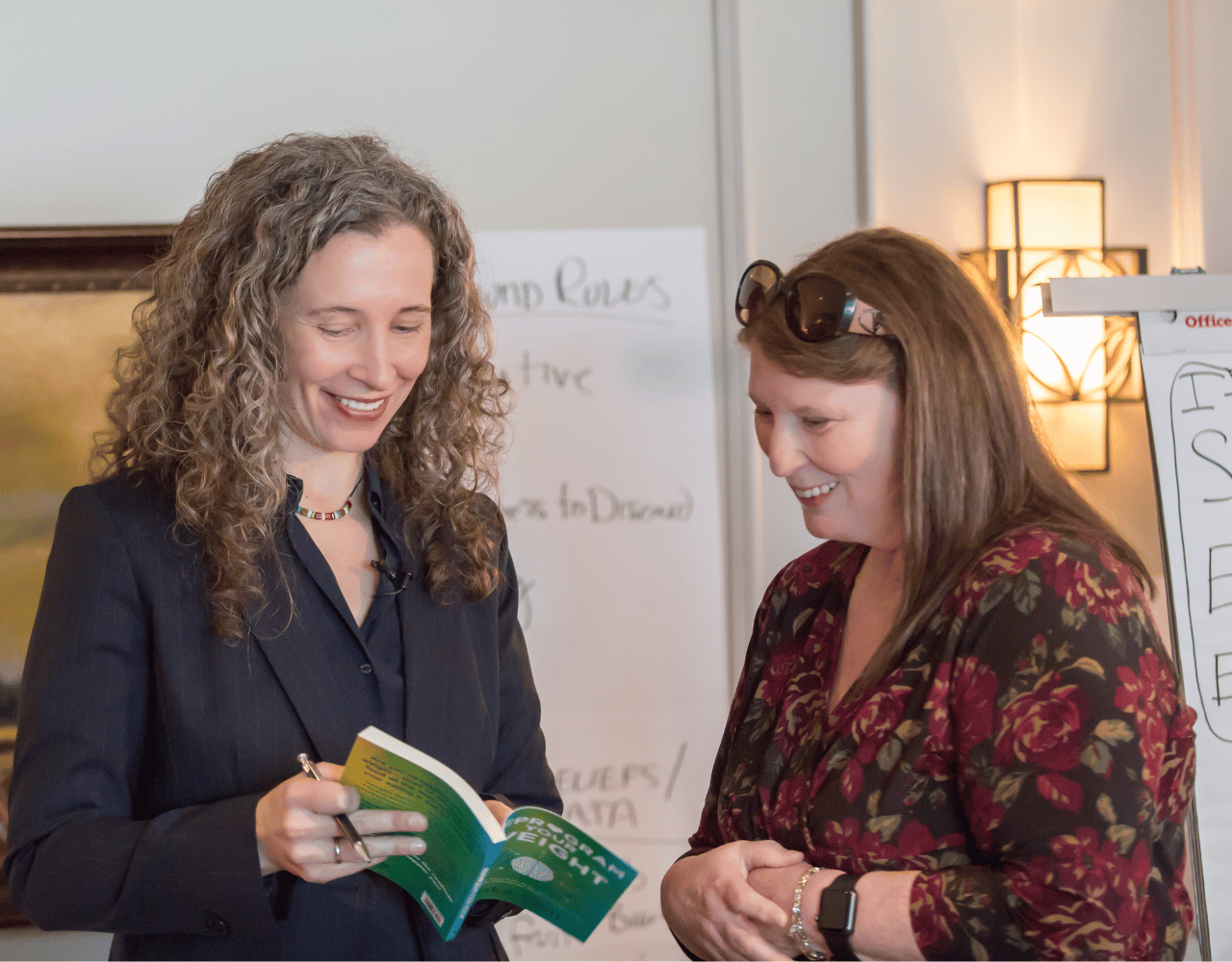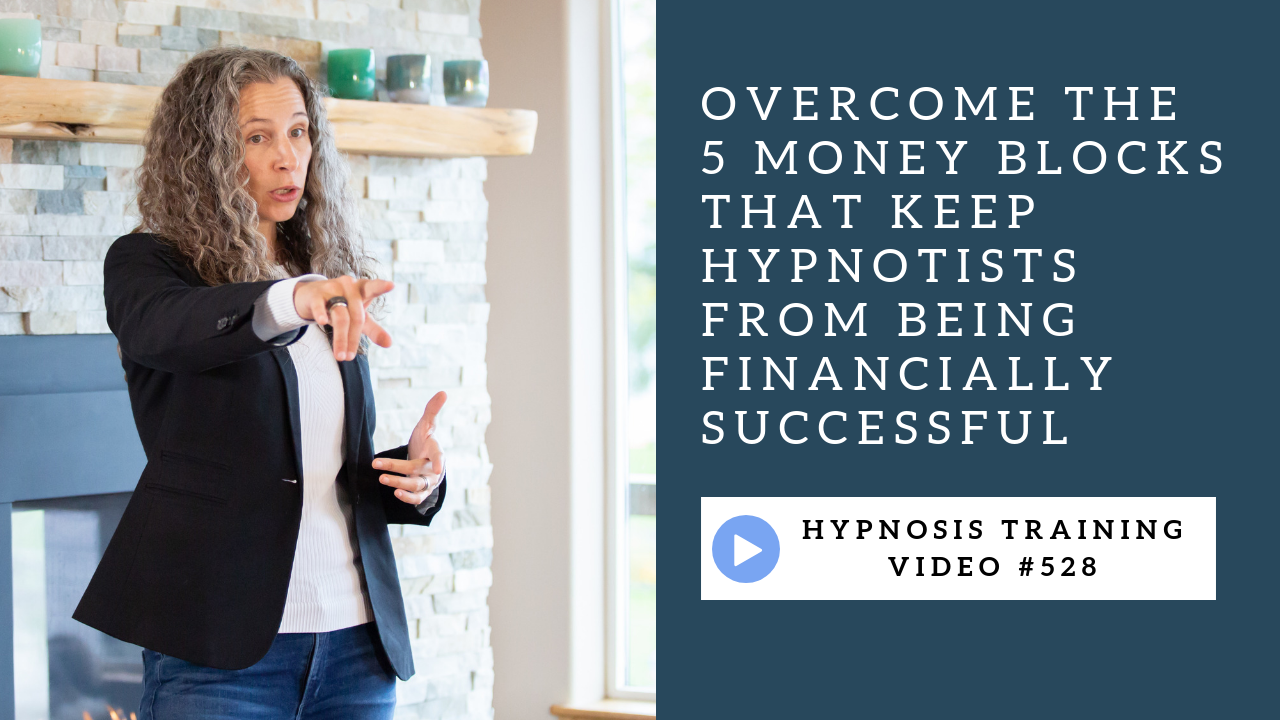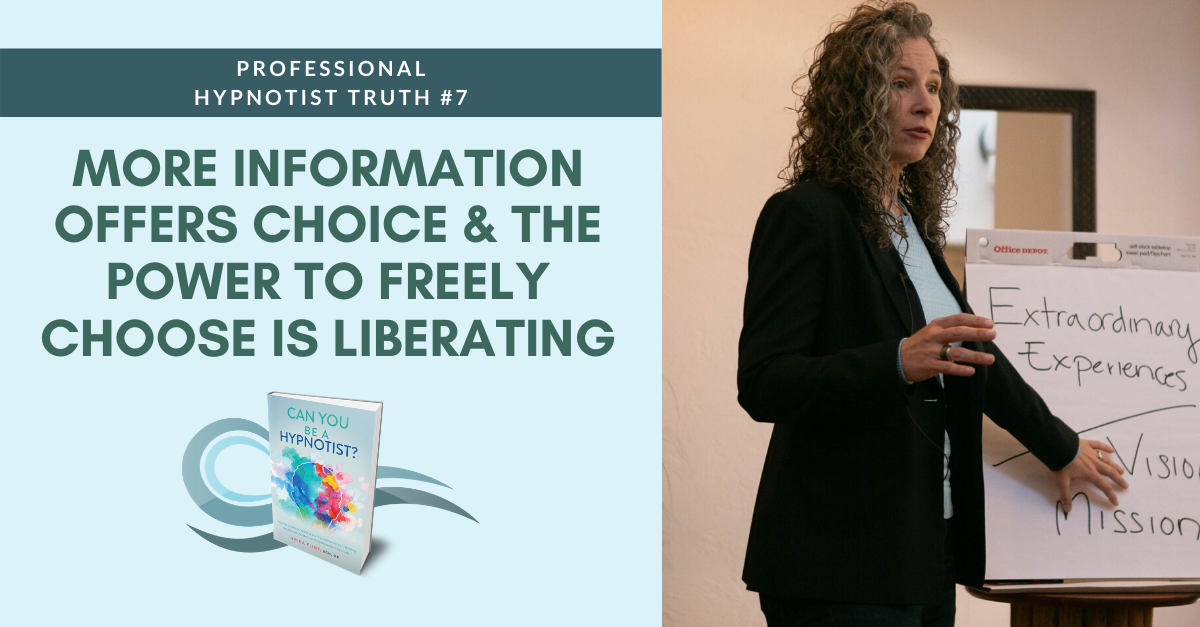The Ghosts Your Clients Are Running From (And the Freedom They're Running Toward)
Key Takeaway: When clients focus on what they DON'T want (anxiety, fear, worry), those ghosts tend to keep haunting them. The transformation happens when you help them shift their focus to what they DO want - and suddenly, those ghosts lose their power.
The Monster That Isn't Really There
Last week, a hypnotist in our mentorship program shared a moment from her practice that reminded me of something we all do around Halloween - we create monsters that aren't really there.
A client sat across from her, visibly tense, and kept saying, "I just don't want to feel anxious anymore." Even when the anxiety wasn't there, the fear of anxiety had become a kind of ghost haunting her daily life - always there, always threatening, but impossible to grab hold of or get rid of.
The practitioner paused and gently asked, "If that anxiety just disappeared, what would you be free to do?"
This simple question really shifted something important for her. Rather than being continually haunted by what scared her, the client began to visualize her life filled with confidence and calmness. The ghost lost its power the moment she stopped running from it and started moving toward something she actually really wanted.
This change in perspective marked the beginning of a profound transformation.
Why Clients Focus on What They Don't Want
As hypnotherapists, we encounter this pattern regularly. Clients come in focused intensely on negative emotions or states they wish to eliminate. They say things like "I don't want to feel anxious," or "I just want to stop worrying," or right now, around Halloween, "I don't want to eat all that candy this year."
While these statements indicate what the client wishes to avoid, they rarely clarify what the client truly desires to experience instead. The problem is the brain is already really good at focusing on what's wrong and what to avoid. When you add "don't want" statements on top of that, you're just giving the problem more attention. When you say "don't think about anxiety," the brain has to think about anxiety first in order to know what not to think about.
It's like telling someone "don't think about a pink elephant." What just happened in your mind? You thought about a pink elephant.
A lot of people only know they don't want anxiety, or they don't want to overeat Halloween candy, or they don't want to feel stressed at work. The fear of experiencing what they don't want can then become an apparition that hangs out in the mind, unseen but always present. So the real transformation starts when you help them move from "I don't want X," to "I want Y instead."
When the Ghost Loses Its Power: Asking Better Questions
Another hypnotist I work with uses a beautifully simple question to unlock a client's deeper motivations: "What would your life look like without this?"
For one client struggling with social anxiety, this question opened the door to a vivid description of living with ease, engaging more in social activities that held real interest, and pursuing a long-held interest in painting. By envisioning these specific aspirations, the client moved from a negative focus (avoiding anxiety) to an inspiring, positive vision (living with confidence and creativity).
For the client worried about Halloween candy, the question became: "If you handled Halloween the way you want to, what would November 1st feel like?" She answered, "I'd feel proud of myself. I'd feel in control. I would enjoy the holiday with my kids without that guilty, sick feeling the next day."
See the difference? One is running away from something, and the other is running toward something she truly wants.
Once the client articulates their positive outcome, you can integrate those specifics into hypnotic suggestions. This might involve guiding the client through a visualization of waking up each day feeling calm and collected, or imagining themselves confidently talking to friends at a gathering, or waking up on November 1st feeling proud and energized rather than guilty and sick.
These specific, positive images help anchor the desired states and make them accessible during everyday life.
Real Examples: From Ghost-Chasing to Goal-Setting
Another practitioner observed a similar breakthrough while working with a client who was consumed by stress at work. The client kept saying, "I just don't want to feel so overwhelmed anymore."
The hypnotist asked, "What would a really good workday look like for you?"
Her client described a scenario filled with productivity, satisfaction, and even specific moments of genuine enjoyment. She talked about finishing her tasks feeling accomplished rather than depleted - and what that actually feels like. She talked about having energy left for her family in the evening, and about actually looking forward to certain projects that sparked her passion rather than dreading everything.
This reframe created what the hypnotist called a "light-bulb" moment in their work together. It broke the old pattern of worry and redirected the client's mental energy toward something achievable, real, and highly desirable. The client wasn't being haunted by that stress and the fear of overwhelm at work anymore because she was now able to focus more on a vision of what work could actually feel like for her.
How to Implement This in Your Practice
The process is straightforward, but it requires patience and genuine curiosity about what your client truly wants.
Start with validation. Spend a few minutes acknowledging what the client wants to avoid. This isn't wasted time - it validates their feelings and shows you understand why they're there. Let them talk about the anxiety, the stress, the Halloween candy temptation, whatever ghost is haunting them.
Then ask the reframing question. "If this issue disappeared completely, what would you be free to do?" or "What would your life look like without this?" or "If you handled this the way you really want to, what would that feel like?"
Give them time with this. Don't rush. Some clients need several minutes to shift from fear-focus to freedom-focus. That's normal. They've been running from the ghost for so long, they've forgotten what they're actually running toward.
Let them paint the picture. Ask follow-up questions. "What else?" "Tell me more about that." "What would that feel like in your body?" "Who would you be with?" "What would you be doing differently?"
The more specific and sensory-rich their vision becomes, the more real it feels. And the more real it feels, the more their brain can actually move toward it.
Integrate it into your hypnotic work. During the session, weave their specific language and imagery into your suggestions. Use their words, their vision, their desired feelings. This isn't about you imposing a goal - it's about amplifying the vision they've already created.
Close with reflection. After the session, give them time to talk about what they experienced. What felt different? What surprised them? What feels possible now that didn't before?
When This Approach Doesn't Work
This strategy isn't effective with every client in every situation.
Some clients aren't ready to shift their mindset from negative focus to positive vision. They're still too caught up in the fear, too identified with the problem. In these cases, you might need to spend more time with validation and understanding before attempting the shift. That's okay - meet them where they are.
For clients with severe anxiety or trauma, this approach might feel invalidating or even triggering if introduced too early. These clients need more grounding, more safety-building, more establishment of trust before they can turn away from the familiar ghosts and envision positive outcomes. If you sense resistance or distress, back up. Do the foundation work first, or refer them to a trauma specialist if needed.
And some clients genuinely don't know what they want - they've been running from ghosts for so long that they've lost touch with their own desires. These clients might need more exploratory work, more permission to want things, more practice articulating what brings them joy or peace or satisfaction.
From Haunted to Free
Returning to our initial scenario, the client who initially focused on anxiety ultimately found herself actually inspired by the vision of a calm and fulfilling life. This shift in focus enabled her to pursue her goals with renewed energy and clarity.
She stopped being haunted, and she started being free.
As hypnotherapists, guiding clients from a negative fixation to a positive vision can be genuinely transformative. It unlocks potential they forgot they had. It reminds them that they're not just running away from something scary - they're running toward something beautiful.
The ghosts lose their power when we stop focusing on them and start focusing on the life we actually want to live. Start integrating these reframing techniques into your practice and watch what happens when fear transforms into freedom.
Ready to learn the complete systematic approach for transformations like these? Our next Professional Hypnosis Certification starts January 25th - and this reframing technique is just one small piece of what you'll learn.





